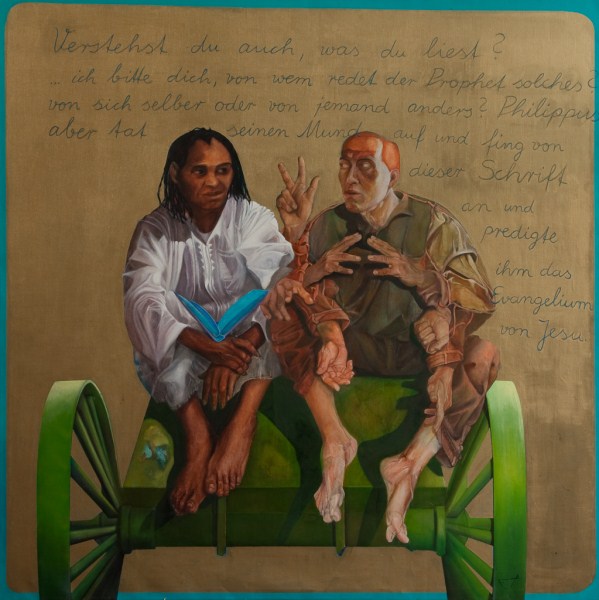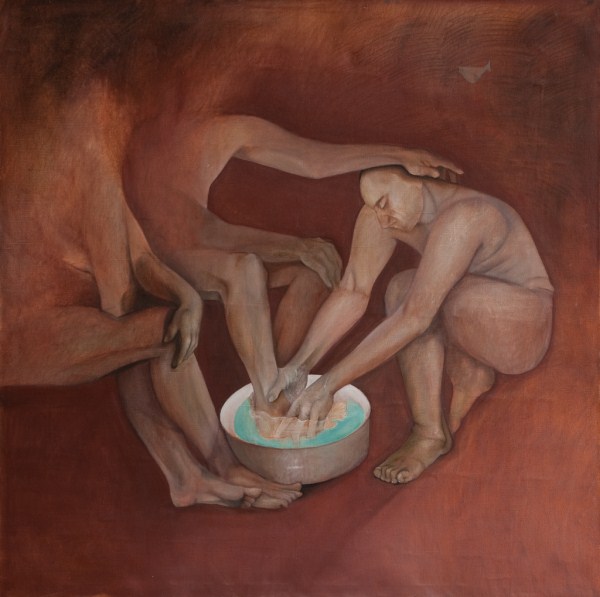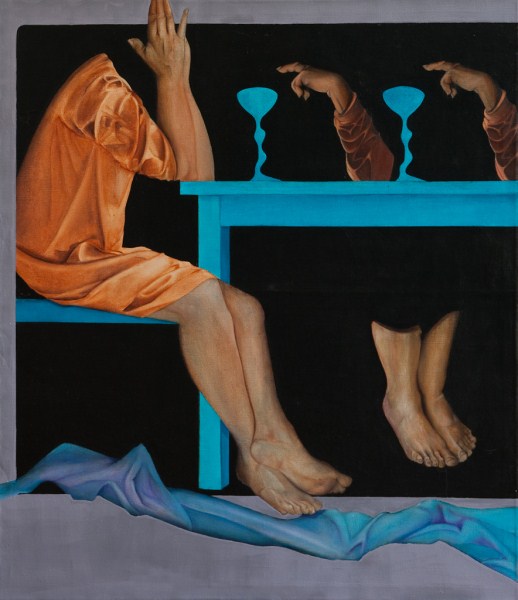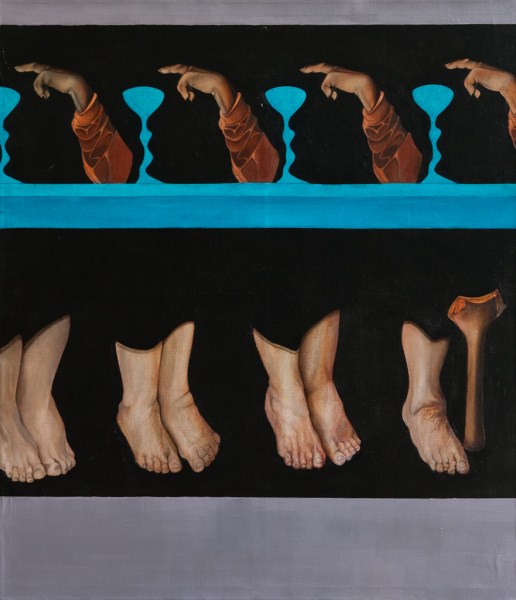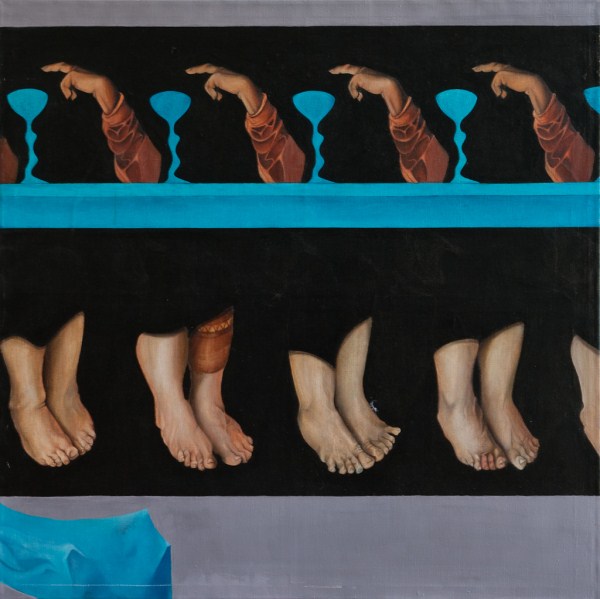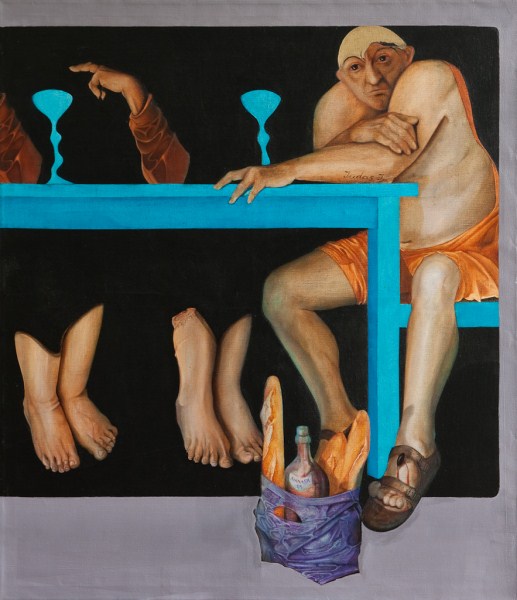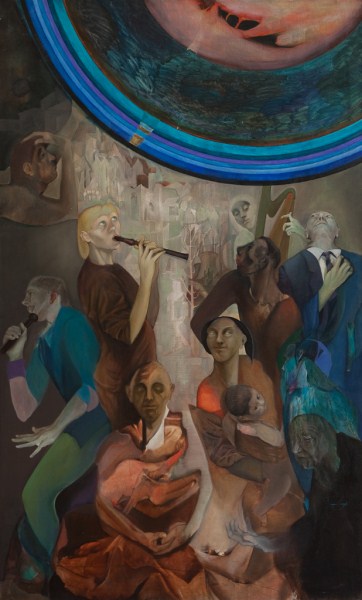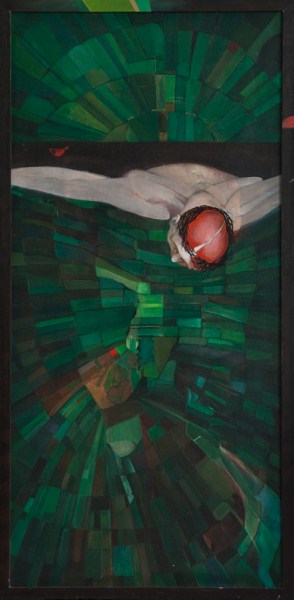Monography artist Johannes Wickert
The German artist Johannes Wickert (born 1954) studied physics and psychology; wrote books on Einstein and Newton; and is professor at the University of Cologne. In his paintings he places himself in the skin of the people, who are tormented by fate, who waste away in our society, which is becoming progressively bleaker. Wichert touches the essence of human suffering and probes its boundaries, using a strong religious dimension to try to formulate an answer to its purpose. ,,I cannot imagine a life without some form of religion,’’ the artist says. ,,However, faith especially needs pictures alongside theology and preaching the Gospel. Art can actually give Bible texts a new and contemporary face, which allows people to experience the Christian creed in a new way.’’
Johannes Wickert searches for the meaning of suffering
The German artist Johannes Wickert (born 1954) studied physics and psychology; wrote books on Einstein and Newton; and is professor at the University of Cologne. In his paintings he places himself in the skin of the people, who are tormented by fate, who waste away in our society, which is becoming progressively bleaker. Wichert touches the essence of human suffering and probes its boundaries, using a strong religious dimension to try to formulate an answer to its purpose. ,,I cannot imagine a life without some form of religion,’’ the artist says. ,,However, faith especially needs pictures alongside theology and preaching the Gospel. Art can actually give Bible texts a new and contemporary face, which allows people to experience the Christian creed in a new way.’’
In depicting his figures Wickert focuses on the feet: the ‘forgotten part of the human body’. They are unique for every person, just like the face and finger prints. The artist wants to emphasise the psychology of his figures through the feet: ,,By observing the way a person stands, you can see how he looks at the world: the way he walks exposes the kind of activities he does and physiognomy of the feet mirrors the state of his soul. Up until now this aspect has received little attention in the history of art.’’ Wickert is inspired by the natural science and philosophy of the 17th century philosopher Gabriel d’Artis. He was of the opinion that God looked at people from the earth and not from up above. It is in the feet ‘the human soul is housed’, since the feet are the only parts of the body which have contact with the earth.
With technical competence Wickert depicts his figures realistically down to the smallest detail. Because of this the figures are awkward, less importance is given to immediacy and spontaneity, and little attention is paid to the dimensions and perspective. The pallet has a strong symbolic and emotional intensity. The light blue colour, which the artist makes himself, effectively provokes a dramatic and melancholy mood, and fits the strange supernatural settings well. Wickert’s strong and balanced imagery is varied. One time loneliness and drama is strikingly represented by chunky grey figures against a monochrome background: another time the focus is on a symbolic position or gesture: and yet another time the compositions have a complicated structure.
Paintings of Johannes Wickert
Philip and the treasurer. The apostle Philip meets a eunuch of the King of Ethiopia on the way to Gaza, who reads him a text of the prophet Isaiah ( Apostles 8, 26-40). To Philip's question, “Do you understand what you are reading?”, the eunuch answers: “Who is the prophet talking about, himself or someone else?” Then this text as a starting point, Philip explains the message of the Gospel.
|
Washing of the feet.
Wickert expresses the symbolic gesture of washing the feet in a striking manner. On this monochrome – orange canvas the complicated interplay of the position of the figures leads us directly to the bowl of water, which is a glowing light blue. Their faces dissolve into the atmosphere while the artist’s main focus is on the hands and feet.
|
Judas
|
The Lord’s Prayer by Leos Janácék.
|
Christ above the Bijstandkerk in Brussels.
|
|
at the end of his tether buffeted by the wind he fears he knows in the bitterest hour
|
